Mark Caney's Blog, page 15
June 4, 2015
‘Loud wakeup call’ over critically endangered dolphin
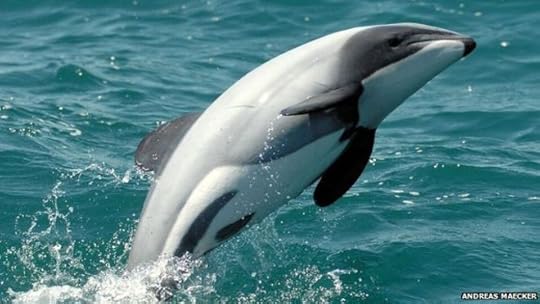
Maui’s dolphins are less than 1.5m long and only found off the west coast of New Zealand
The smallest and rarest marine dolphin in the world could be extinct within 15 years if protection is not stepped up, new research suggests.
Conservationists say the remaining population of Maui’s dolphins has dropped below 50.
The critically endangered species is found only in waters off New Zealand.
Measures to prevent dolphins dying in fishing nets must be extended, according to the German conservation organisation Nabu.
Fishing should be banned across the dolphin’s entire habitat rather than only limited areas, they say.
According to new estimates just 43-47 individuals, including about 10 mature females, are left.
The study is being presented at a meeting of the scientific committee of the International Whaling Commission (IWC) in San Diego, US.
More than 200 experts are attending the annual event.
“These new figures are a loud wakeup call: New Zealand has to abandons its current stance, which places the interests of the fishing industry above biodiversity conservation, and finally protect the dolphins’ habitat from harmful fishing nets, seismic airgun blasts and oil and gas extraction,” said Dr Barbara Maas, Nabu’s head of endangered species conservation.
Unless this happened, Dr Maas said the dolphin’s extinction was ”a matter of when, not if”.
A spokesperson for the New Zealand minister for conservation said no comment would be made until after the scientific committee reported its findings and recommendations in June.
Tiny population
The Maui’s dolphin is a subspecies of Hector’s dolphin that only lives in shallow coastal waters off New Zealand’s North Island; the other subspecies of Hector’s dolphin is found around the South Island and is more abundant.
Numbers of dolphins have declined since the 1970s. Scientists say the main threat is fishing using gillnets or trawling, which they estimate kill five Maui’s dolphins each year.
In 2010/2011 an estimated 59 individuals remained, which fell to 43-47 in 2014/2015.
The New Zealand government extended its restrictions on the use of set gillnets in 2012 and again in 2013, but campaigners said these measures did not go far enough.
The scientific committee of the IWC called last year for full protection for the dolphin across its range.
Source: BBC

June 3, 2015
WDC Joins Alliance to Halt Growth of Chinese Captive Dolphin Facilities
From WDC, 2 June 2015
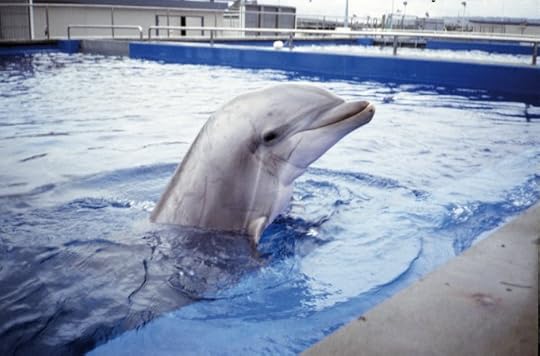 WDC has joined with international conservation and protection organisations, Hong Kong Conservation Society and Animal Welfare Institute in an effort to prevent the worrying growth in whale and dolphin captivity in China.
WDC has joined with international conservation and protection organisations, Hong Kong Conservation Society and Animal Welfare Institute in an effort to prevent the worrying growth in whale and dolphin captivity in China.
The China Cetacean Alliance will raise awareness of the negative welfare issues caused through the wild capture and subsequent captivity of whales and dolphins (cetaceans) for ocean parks in mainland China.
The number of ocean parks in mainland China is developing rapidly, and the number of wild caught cetaceans held captive within these facilities continues to increase. Alliance members have documented the arrival of over 250 wild caught cetaceans into 26 ocean parks since 2010, and many dolphins are supplied from the cruel drive hunts that take place in Japan.
The Alliance has now commissioned further investigation into the ocean park industry in mainland China. To date, 10 ocean parks have been investigated.
The results of the investigation are due to be published in mid-2015 and will be used as part of a wider public awareness campaign to inform the Chinese public about the welfare concerns of capturing whales and dolphin from the wild and poor lives they then lead in captivity.

Divers rescue baby dolphin in South Africa
From Ocean Explorers Dive Centre Facebook page:
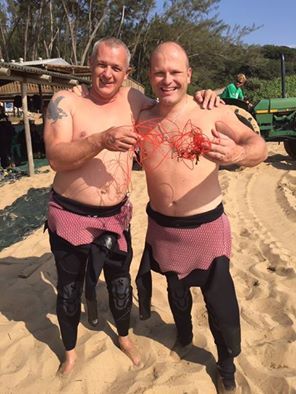
“Hello everyone what an amazing weekend down in Sodwana I would just like to let everyone know what went down on our dolphin rescue. We had a mother and calf come up to us several times to the boat and we could see the baby was tide up, we thought it was a net at first. I jumped in with them and swam with them and could then see that the calf was in fact tied up with very strong fishing line that had cut into the dorsal fin about 3 inches as well as both pectoral fins, wrapped around its body and tied to its tail and about 3meters of line trailing behind it. After assessing the scene we came up with a new plan and jumped back in the water. After 30 minutes of swimming and finally catching the line and 10min of surfing and tug of war and help from its mother we managed to cut the baby free! Huge thanks to John for helping me and a huge thank you to Elfas from Sodwana bay lodge our wonderful skipper that made it all possible and to Yvonne, Carol, Nick and Chad for spotting from the boat. Well done Ocean Explorers we saved a beautiful baby dolphin!!! Looking forward to swimming with you soon little guy”. Ryan Cox

June 2, 2015
Ancient marine dolphin fossil found in Waitaki, NZ
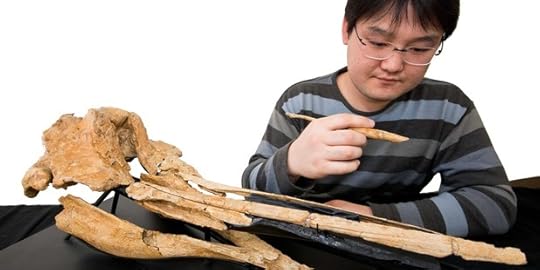 Researchers from Otago University have linked an ancient marine dolphin fossil, found in Waitaki, with an endangered dolphin that lives in the river systems of Nepal, India, and Bangladesh.
Researchers from Otago University have linked an ancient marine dolphin fossil, found in Waitaki, with an endangered dolphin that lives in the river systems of Nepal, India, and Bangladesh.
The fossil was discovered in the Hakataramea River valley, and is one of only a few other dolphins known to have existed from about 22.5 to 24.5 million years ago.
At that time, New Zealand was just a cluster of small, low islands with extensive shallow, warm seas.
Professor Ewan Fordyce and his PhD student Yoshi Tanaka have formally named the new fossil species Otekaikea huata, which refers to the marine limestone formation it was deposited in and the Maori word for spear.
The dolphin fossil belongs in the once-diverse and widespread dolphin group called Platanistoidea. The group is now extinct in the oceans, and is represented only by the endangered Ganges river dolphin and Indus river dolphin subspecies.
“Our study is one of several showing that the South Asian river dolphin lineage was more diverse in the past,” Prof Fordyce said.
“It is not clear why this lineage became extinct in the oceans, but it could have been due to long-term climate change and competition from later-evolving ocean dolphins.”
The Ganges River and Indus River dolphins are considered endangered, with large dam and irrigation projects threatening their habitat.
Source: New Zealand Herald

May 13, 2015
Mark Caney, author of Dolphin Way, profiled in DIVE
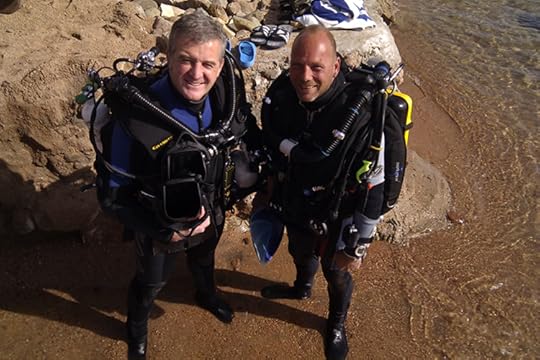 Mark Caney and Dave Griffiths in Egypt
Mark Caney and Dave Griffiths in EgyptJoe Cocozza meets Mark Caney to discuss the future of rebreather diving
A diver since 1976, Mark Caney is a renaissance man of diving. After serving in the British Military in Cyprus, Mark established a dive centre and was based on the island for 18 years. He started out as a BSAC instructor; however the school started getting American GIs asking for this thing called PADI. He checked out the PADI system and liked it so much he became one of the first PADI Course Directors outside the USA. He was also one of the first dive instructors in the Mediterranean to embrace technical diving and he became a tech diving instructor trainer. In the early 1990s he sold his interest in the dive centre and travelled throughout Europe and the Middle East teaching PADI instructors and setting up technical dive centres for nitrox and trimix diving. In 1996 PADI offered him a job in its UK office. Today he has two jobs at PADI: first he is the VP of training and customer services for PADI Europe/Middle East/Africa; and second he is the VP of rebreather technology for PADI worldwide.
You started scuba diving when you were in the British Military?
MC: I was not a military diver but I learned recreational diving while I was in the military. I worked in Military Intelligence, so I have to be careful about what I say here. I started diving while in Northern Ireland. After that I went to Cyprus and there was great diving there and I decided to leave my military career and start a dive school.
Currently you are a PADI VP for Europe/Middle East/Africa. That is a big office area.
MC: It is about a third of the world and it is a job that requires I travel a lot. But I also have a global job for PADI in the technical diving division, which covers the tech diving range of courses. In that area, I am the vice president of rebreather technology.
Recently PADI has embraced technical diving, but it was not so long ago that PADI seemed to be ‘anti tech’. I am a New Jersey wreck diver and since the 1980s we were doing deep decompression shipwreck dives. At that time, I was a PADI Divemaster and I was not allowed to even mention to Open Water students that we were doing deco dives. It was off the grid. But then in the mid 90s PADI introduced their EANx course, and I thought ‘Wow, this is what tech diving educational materials should be like’. Can you address that in the early days, PADI seemed to be anti tech diving?
MC: I think a lot of people got the idea that PADI was anti tech diving, but in fact if you look back to what was said, that was not the case. PADI has always had a cautious approach to these developments but was not opposed them. You have to understand, PADI trains huge numbers of people (PADI issues nearly a million certifications a year). We didn’t want to get involved until we were sure that we could make our tech courses as safe as practicable. With new technologies evolved to a reasonably mature level, we made the decision to support tech diving education and do it in the most professional and educationally sound manner in the industry. You mentioned our introduction of nitrox. Our current nitrox program is our most popular specialty course. And likewise, we now have a full range of technical open circuit courses, and now our technical rebreather and recreational rebreather courses. So we have the full spectrum of programmes.
So how long have you been diving on rebreathers?
MC: I started diving with rebreathers in the early 90s. First with a semi closed rebreather (SCR) and soon progressed to fully electronic closed circuit rebreather (CCR) by the mid-90s. My first CCR was the AP Diving Inspiration. However, now I dive many different rebreathers. If you need to stay underwater a long time, a rebreather is a wonderful tool. And it is not necessarily a tool exclusive to tech divers.
Yes, you mentioned that there are now two different types of rebreathers: the R-CCR (recreational rebreather) and the T-CCR (technical rebreather). Explain the concept behind the recreational rebreather or R-CCR.
MC: In the past there had been a small tech rebreather market but not recreational. We at PADI felt there could be both. In our tech diving division, we have been following rebreathers for many years. PADI wanted to get involved in rebreathers when there was a clear technical and recreational rebreather market. Several years before, I designed a list of features and requirements that a recreational rebreather would need. This was a Cinderella glass slipper situation – we were waiting for the right size foot to come along. Four years ago, I was approached by Poseidon and they asked me ‘What are the requirements for a recreational CCR?’ I gave them my list and a year later they came up with plans for what would become the Mk6 R-CCR. This is the first CCR designed from the ground up for the recreational diver market.
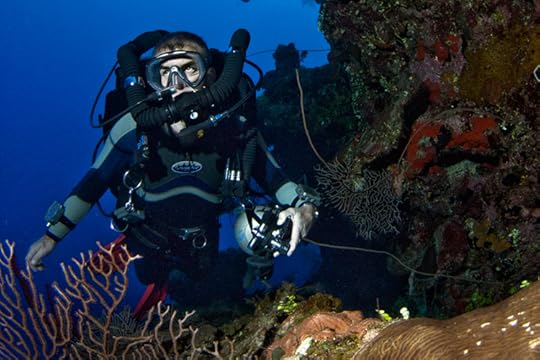 Mark Caney in Caymans / Kevin Gurr
Mark Caney in Caymans / Kevin GurrSo what is the difference between the T- Rebreather and the R-Rebreather and the subsequent training?
MC: A technical rebreather is a demanding unit and requires very extensive training, because there are a myriad of different situations where the unit could malfunction and/or the diver make a critical error. So the diver needs a range of solutions to the different problems. This is technical diving and the diver has to be highly trained and prepared to follow a lot of very rigid protocols prior, during and post dive.
The recreational rebreather diver mindset is quite different. We use the traditional recreational diving envelope, that is maximum depth is 40 metres, no decompression stops and no significant overhead penetration. The recreational diver stays within the recreational diving envelope and if everything or anything goes wrong, the diver can simply bail out to open circuit and ascend to the surface. The upshot is there is one solution to all problems a diver will encounter underwater. Because of the limited operating environment, it limits the complexity of issues that the diver has to handle. But that puts a greater demand on the engineering/design of the rebreather.
I mentioned I had a list of features/requirements that an R-Rebreather would need. The list was based on analyzing rebreather incidents. Every item on the list was there to counter any of the likely errors a diver might make. I will give you an example of this. Let’s say it is possible to put the CO2 canister in a rebreather two different ways and if the diver put the canister in backwards it would be dangerous. That is an engineering error and that could be fixed by design. Another example: is it possible to enter the water without turning on your CCR? Now we expect a technical rebreather diver to be disciplined enough in his pre-dive procedure not to have this happen. However, with a recreational diver, it is foreseeable that it will happen, so a fundamental requirement of the recreational rebreather is, if you jump in the water with out turning on the unit, you either get a loud warning or the unit itself makes it impossible for you to dive.
The flip side of the coin is that while the type R-CCR is easier to use, it is also more complicated to make. This is analogous to the modern automobile. A modern car has automatic lights/wipers, cars that park themselves, auto transmission, ABS brakes and computer controlled everything.
Now the type T-Rebreather is more complicated to use, because it has to be. In technical diving, you will be doing decompression, penetration and deep diving. Just as in open circuit technical diving, the diver does not always have the option to bail out and ascend directly to the surface. The diver has to be trained to execute many solutions to many possible problems.
You recently spoke at Rebreather Forum 3. This was the first time in many years that all the world’s rebreather experts got in one room to brainstorm. What do you think was accomplished?
MC: It was great to get all the key experts in one room to benchmark the whole state of the art. And to say what is working and what things that we as an industry need to do to move forward.
And as far as the R-CCR side goes, I think it was historic because we clearly identified this whole Recreational Rebreather concept and that the recreational rebreather diver has different needs to a technical rebreather diver. It was a very useful conference in both those respects.
So what do you think the future is for rebreather diving?
MC: I would not see the need for a rebreather in every diver’s kit. However, it’s likely that rebreathers will be more widely used by more divers. There will be a wider spectrum of rebreather divers. And we will see a clear delineation between types T-CCR and R-CCR divers. Just as now you go on a boat and see both technical and recreational open circuit divers.
Getting off the subject of the technology: you have been diving for 30 years and are a very keen advocate for protecting our oceans. What are your observations?
MC: The fact is that I have been diving for a long time. If you ask anybody who has been diving a long time, and particularly diving a long time in the same location, how the diving in that location has changed over the last 20 years, you will often hear that it has gotten worse. So we scuba divers are the eyes of humanity when it comes to the marine world. Think of it this way, only a tiny number of human beings actually scuba dive compared to how many of us live on this planet. And when you consider that water covers 70 per cent of our planet, scuba divers have a pretty crucial role in reporting back what we see. So if we are noticing problems, we have the responsibility to tell people about it and to get them to understand.
I’m very fortunate because of my job with PADI and we are able to do a lot of good work with Project Aware. One particular project we are working on involves protecting sharks and rays. It is important that scuba divers tell people how very important sharks are to our world. Also, I am very involved with educating the public about dolphins. These are the issues close to my heart.
You mentioned dolphins. You authored the book Dolphin Way. When I was first given a copy of your book, I thought it some New Age fairy tale or an anthropomorphic story about Flipper’s cousin. I was wrong. The novel is an interesting look into way another species, with intelligence comparable to our own but evolved in a completely different fashion, would perceive what is going on on this planet. What was the inspiration for the novel?
Early in my diving career, I had a very close personal encounter. I was in the Red Sea and there was a lone dolphin that kept regularly appearing in a bay. I got there at night, it was a flat calm sea with a full moon. I snorkeled out and spent several hours playing with her, to the point where she actually let me touch her. So for two days we swam together and I felt this connection. But I, like everyone else, had the notion that dolphins are happy, smiley, gentle creatures and that everything is perfect in their world. Then I read this story about these porpoises that were dead and it was dolphins that killed them. So I realized that everything is not perfect in their world.
There was something there that was causing that conflict in the dolphins’ world and that got me thinking, ‘What could that be?’. So that got me thinking on the storyline of the book. People always talk about an intelligence from outer space visiting earth and how we would treat alien visitors. But the fact is we already have another intelligence right here on this planet. It is a different kind of intelligence and it evolved in a different way. Humans have evolved to manipulate the environment with technology and that is not always a good thing – we have caused a little bit of harm here and there. So here are the dolphins, another species and another society with comparable intelligence but they use it in a completely different way. Maybe dolphins have a harmony with their environment that our species lacks. So we are already in contact with an intelligent species and how do we share our planet with them? I look at how we treat this intelligent race that lives in our midst and it does not bode well for any extraterrestrial visitors to earth.

May 12, 2015
Dolphin Hunt in Taiji Prompts Review by Japan Aquariums
 A demonstrator holds a placard during a rally in London to protest Taiji’s annual slaughter of dolphins in January.
A demonstrator holds a placard during a rally in London to protest Taiji’s annual slaughter of dolphins in January.The Japanese Association of Zoos and Aquariums said it will decide later this month whether to continue collecting dolphins that are caught through a hunting practice known as drive fishery after an international zoo organization suspended its membership because of the practice.
The World Association of Zoos and Aquariums on April 22 said it halted Japan’s membership in an unanimous vote. It said the Japanese group failed to meet the world association’s standards, which prohibit “cruel and nonselective methods of taking animals from the wild.”
In drive fishery, dolphins are collectively herded into shallow water with multiple boats. Fishermen pound on metal poles to disorient the dolphins, which are sensitive to sound. Some are captured for exhibition at aquariums or to be trained, while others are slaughtered and processed for their meat.
The annual hunting has gathered international attention in recent years, especially after “The Cove,” a documentary film depicting the hunt in the city of Taiji in western Japan, won the 2010 Academy Award.
According to the Japanese association, approximately 20 dolphins caught during the Taiji hunt end up being sent each year to aquariums for exhibition. A spokesman for the association said the dolphins are caught legally under Japanese law and those destined for aquariums are captured in a way that avoids harm to the animals.
The spokesman said that while large-sized aquariums are able to breed dolphins on their own, that is not the case for other smaller institutions. But the organization will ask its 153 members whether they should continue relying on drive fishery to secure the mammals.
The world group has about 50 members including the U.S. Association of Zoos and Aquariums.
Prime Minister Shinzo Abe has defended Taiji’s dolphin hunt, saying it is “deeply rooted” in the local culture. Meanwhile U.S. Ambassador to Japan Caroline Kennedy expressed her opposition last year, tweeting that the U.S. government is opposed to drive hunt fisheries.
Source: Wall Street Journal

May 11, 2015
May 8, 2015
Whale Alert app helps avoid whale collisions
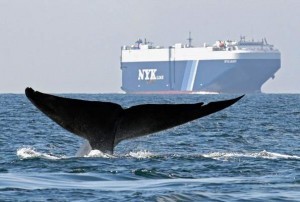 Before the advent of technology, Sean Hastings remembered the tedious task of tracking and mapping the blue and humpback whales that swam off the California coast.
Before the advent of technology, Sean Hastings remembered the tedious task of tracking and mapping the blue and humpback whales that swam off the California coast.
Folks sent out on boats daily would return with a week’s worth of data sheets. Another week would be spent inputting the whale-sighting information.
By the time the information was available, it was already outdated.
For Hastings, resource protection coordinator for the Channel Islands National Marine Sanctuary, real time information is crucial to alerting cargo container and other ships en route to the ports of Los Angeles and Long Beach when they are within striking distance of whales who are in the area to feed.
Now there’s an app for that.
Whale Alert is being offered for free on mobile devices by NOAA’s Office of National Marine Sanctuaries. It was developed in partnership with private and public sectors, including government agencies, academic institutions and nonprofit conservation groups. NOAA, the National Oceanic and Atmospheric Administration, is a federal agency focused on the condition of the oceans and the atmosphere.
“It’s expanding our eyes on the water,” Hastings said, adding that the app has been downloaded 5,000 times. “Whale Alert is one way to do it better.”
Available on iPhone, iPad and soon on Android devices, Whale Alert was originally developed in 2012 to protect endangered whales traveling the East Coast. It’s recently expanded to the West Coast with an updated, 2.0 version of the app that allows the public to report live, distressed or dead whale sightings and quickly upload the data.
The real-time information warns ocean carriers of whales in their shipping lanes and gives them time to slow their ships to avoid the deadly collisions.
On April 12, a dead 56-foot male fin whale, an endangered species, was found floating in the Port of Los Angeles on the northern edge of Cabrillo Beach in San Pedro. Researchers determined that the whale died as a result of blunt force trauma — likely a vessel collision.
In 2007, four blue whales were killed by ships in or near the Santa Barbara Channel, while two blue, one humpback and two fin whales suffered the same fate in 2010 in the San Francisco area and elsewhere along the north-central California coast.
In 2013, the Ever Dainty — an Evergreen container ship from Panama — struck and dragged on its bow a 50-foot-long fin whale into the Port of Los Angeles.
“Whales are important both ecologically and economically, but they continue to face a variety of threats including ship strikes,” said Michael Carver, deputy superintendent of Cordell Bank National Marine Sanctuary. “Whale Alert allows citizens to provide data that scientists can use to inform management and better protect whale populations.”
Other new app features include information about California Marine Protected Areas and Physical Oceanographic Real-Time System tide and weather data.
“The public sightings that come in are hugely valuable,” said Brad Winney, co-founder of Conserve.IO , a technology partner involved in the Whale Alert app. “The more data, the better the chances are for whale survival.”
Visit whalealert.org for more information.
Full story: Daily Breeze

National Geographic features communication between humans and dolphins
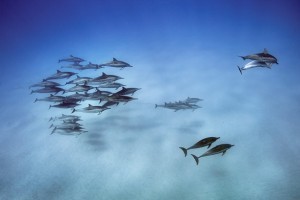 The May issue of National Geographic features communication between humans and dolphins. Click here to view it.
The May issue of National Geographic features communication between humans and dolphins. Click here to view it.

Swimming with whales video
From: www.OceanDefenderHawaii.com
Video: Ocean Defender, Johann Pidoux(tagged), FranceCaptainjo Boat CharterLearn, Connect, Defend! Please stay tuned for our upcoming post about whaling. We need your help in spreading oceanic awareness. Aloha.





